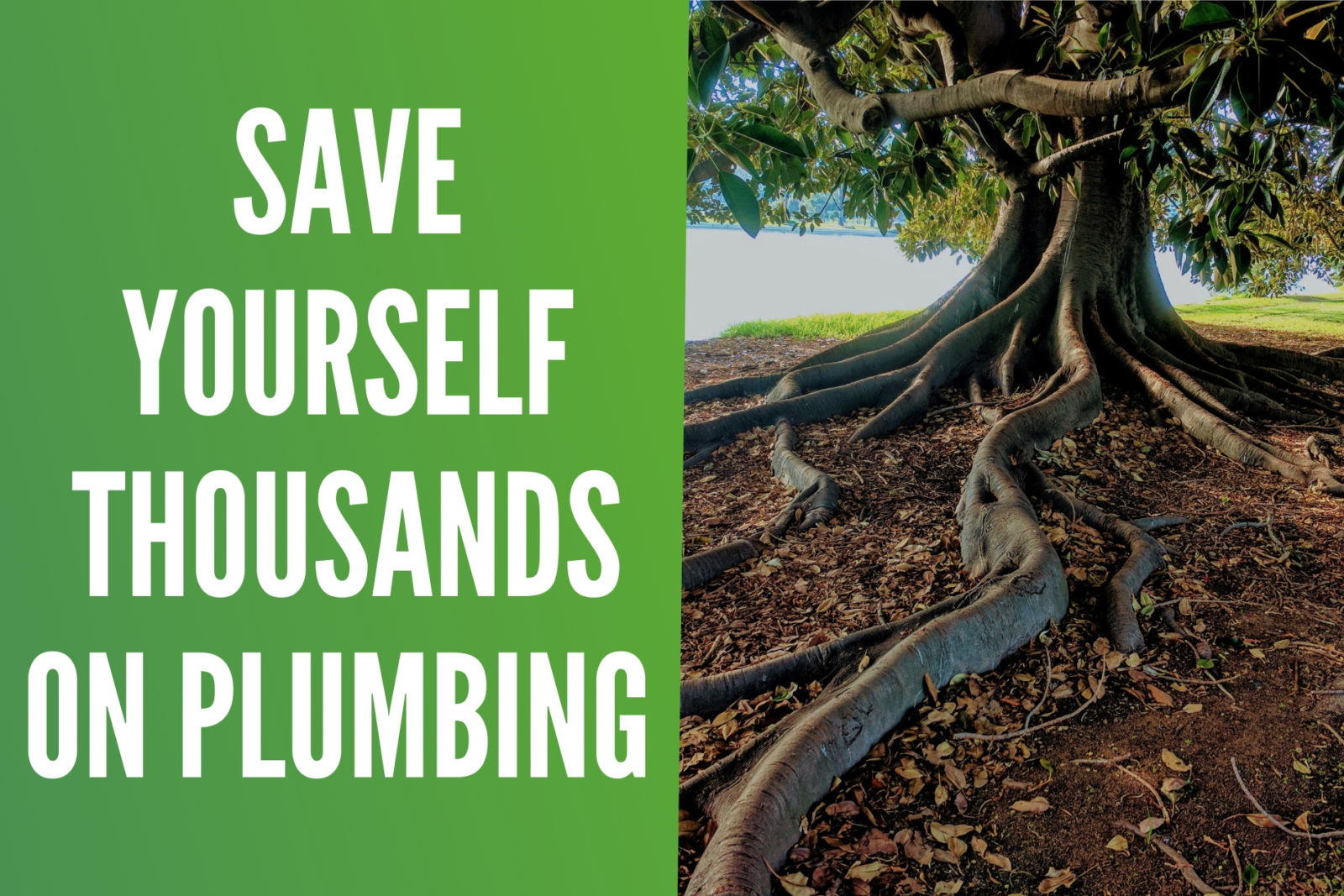I’ve probably said this before on a blog post, but here it goes again: “Plumbing is Everywhere!” Whether you realize it or not, your day-to-day life is repeatedly impacted by your plumbing’s ability to do it’s job. What happens when the hot water runs out and everyone is forced to take cold showers? What happens when the sump pump fails and you arrive to a flooded basement? I’m going to go out on a whim here and guess that you’re not too thrilled when any of these events go down. Well, each of these is directly related to a plumbing fixture in your house. All of these different fixtures, pipes, and drains are connected to one piece, which is the focus of this week’s post. Today, we’re discussing the sewer line!
All of those plumbing failures that I mentioned above are always going to be a headache. Outside of the flooded basement (which can be prevented), these are failures that you can typically get back up and running quickly though. Having seen homeowners distraught with a wide range of plumbing issues, I can tell you one thing for sure: a sewer line needing serious repair or replacement can impact your ENTIRE plumbing system. Plus, to add fuel to the fire, it can require a significant investment to get it fixed. The key point is to spot the deficiency before it gets too bad. It’s critical to get it repaired before it gets so bad that you’re looking at a complete sewer line replacement! In this piece, I’ll walk you through some warning signs and how to react when these occur!
First off, what’s causing these clogs?
✔️ Tree Roots
One of the most common culprits of damaged sewer lines is tree roots. These are particularly damaging around older homes. This is because most older sewer lines were built out of porous materials that left a little bit bigger of a gap between the connections. Compare one of these with modern day PVC pipe and you’ll notice a huge difference! Back to tree roots though. As they grow, roots are consistently on the hunt for sources of water. What better avenue than the supply that’s always there in the sewer line. Over the time, the roots will get into the pipe and continue to grow, before eventually busting a leak in the line.
✔️ Improper Flushing
If you follow us on social media, you know that we regularly post tips on #DontFlushFriday! Just by knowing what can be flushed down the toilet, you’re actually saving yourself from more headaches than you can imagine! Over the years, we’ve so many different items accidentally dropped in the toilet. Luckily, the list isn’t long for what and what cannot be flushed. Human waste and toilet paper. That’s it! Anything else and you can simply toss it in the trash!
✔️ Grease
Grease can certainly do a number on plumbing. Check out our blogpost breaking down disposals and you’ll see grease on the list. The methodology behind this is pretty simple. The grease will harden and stick to the pipes. Overtime, as more things go down it, it’s easy to understand how this can create a significant clog. Don’t listen to people that recommend just running some hot water with the grease, it’s not going to wash it away!
Now that we know the main things causing these damages, what foreshadows future problems?
? Bump in the Yard
So…as you’d probably expect, your sewer line runs out from your house and through the yard to connect to the city’s main sewage system. Well, when there’s a break in your personal sewer line, chances are it’ll pop up a little bit and create a noticeable bump in your yard. Either this will occur or you’ll notice a particular patch of grass that seems much more moist than the rest of the yard. If this is the case, there is liquid leaking out of the pipe and starting to reach the surface.
? Multiple Clogging’s
Most of the time when our team gets called out for a clogged drain, it’s just one fixture that needs some work. Maybe the kitchen sink is backed up or the shower drain. Nonetheless, a sewer line is going to affect multiple fixtures. If you notice a widespread fixture clog, you’re more than likely looking at a sewer line issue. Get your local Kansas City plumber on the phone and get it taken care of right away!
? One Thing Affects Something Completed Unrelated
With everything being connected to the sewer line, homeowners can witness some weird situations when a sewer clog occurs. Maybe when you flush the toilet, you then have a backup in the shower. Or your toilet starts to gurgle and bubble whenever you flush it. In any case, these weird instances should immediately signal a red flag that something’s up.
The key thing to remember is the fact that these all portray various fixtures being affected. When damage has been done, you’re either looking at (1) Repair or (2) Complete Replacement. Here’s how we determine which is best:
? Utilize Technology
Just as has been the case with nearly every other industry, plumbing technology has also advanced considerably over the years. With inspection cameras, we’re able to spot the exact spots of where the leak and gauge the severity of the damage. The effectiveness of this technology is why we never recommend a sewer line clog being a DIY project at any stage. It’s a lot safer this way and without a doubt, more efficient approach!
? The Classic Approach
If the camera reveals that further action needs to be taken, then our team of plumbers will bring in machinery, like a backhoe, to dig up around the line to make the necessary repairs. An alternative approach (which we’ll cover in greater detail in a future post) encompasses the trench-less strategy. This appeals to some homeowners because it doesn’t create nearly as much damage to the yard in comparison to the classic approach.
? Call An Expert!
This is back-to-back weeks that we’ve covered serious plumbing-related issues. Just as was the case with gas leaks, sewer line clogs are no joke. If you let it sit for too long, you could be looking at quite the repair or replacement bill! With these kind of situations, it’s always best to take a precautionary approach. If you notice anything is up, it doesn’t hurt to get a Kansas City plumber out there to, at the very least, do a camera inspection. This will reveal the severity and location of the clog. The key thing to remember here is that you would much rather just want to repair a small area, rather than tear up your entire yard with a complete line replacement.
Our team of expert plumbers works everywhere up north, including Gladstone, Parkville, North Kansas City, and Liberty, as well as down south in Johnson County and Lee’s Summit. Don’t hesitate to give us a call if you have any questions! If you’re worried you might have a clog brewing, let us know the signs you’re witnessing and we can give you an idea if it’s a sewer line clog or just a solo fixture one!


